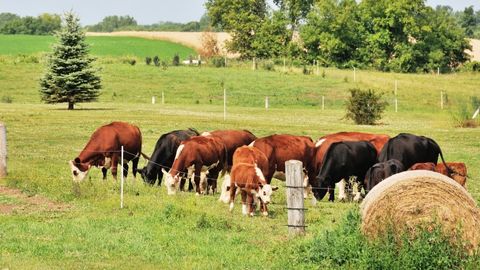Can Grazing Animals Impact Water Quality?

Grazing systems often appear to be one of the most environmentally friendly options. Nutrients in the forages are consumed by the livestock, and then nutrients are excreted back on to the pasture. So why are we concerned?
Two Primary Concerns:
- Uneven distribution of nutrients going back to the pasture
- Water quality concerns
Uneven Distribution of Nutrients
In any given year, only about 10% of the pasture is receiving a urine or fecal spot – up to 90% of the pasture receives no nutrients from manure. In addition, urine and fecal deposition spots tend to be congregated in areas that are favored by the livestock such as by the water trough, shade area, or riparian zones.
Additionally, urine contains a lot of nitrogen, with the area receiving a urine deposition containing the equivalent of up to 1,000 lbs N/acre. That is way more than our plants can utilize with much of the N being lost due to volatilization or leaching.
Water Quality Issues
When livestock defecate in a stream, they are adding nutrients, organic matter, and pathogens to the water. Increased nutrient levels and organic matter result in algae growth (eutrophication) and decreased oxygen levels which can result in fish kills.
Pastures where livestock have direct access to the water accelerate erosion of the stream banks and sedimentation into the surface water. Trampling of the banks increases stream turbidity and temperature, which results in a reduction of aquatic habitat and a widening of the stream channel. Ultimately, this can result in wide, shallow streams and a lower water table that decreases the width of the riparian area supported.

